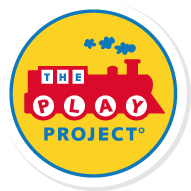Parent Question:
It seems we are getting a bit of a mixed message between our P.L.A.Y. and ABA therapists. Our daughter often becomes frustrated and will be aggressive when she struggles to communicate what she wants (she is not talking, but does use some signs). Our lead ABA therapist said we should try to “beat her to the punch” in terms of her requests. Rather than waiting for her to request something, we should first ask it of her. But, our P.L.A.Y. consultant is suggesting the other way around – let her open up the circle and then we join in. We are a little confused and want to understand when and how to let her “open up circles of communication” vs. when we may need to dictate or initiate the activity. The ABA therapist’s suggestion is clear, but it seems it’s not the best way to advance/enhance our engagement with our daughter.
P.L.A.Y. Home Consultant Answer:
This is a very good question about seemingly conflicting advice – a common issue when families are doing P.L.A.Y. and ABA. The short answer is that you are right, the two approaches often have different answers to the same question. But I think of them as complementary rather than contradictory. It is not that there is a right or wrong answer to any of these questions, but rather that the “right” answer depends on your goals and objectives.
Let’s take the the activity of painting, for example. In a behavioral approach, some goals might be 1) using a paintbrush to improve motor skills, or 2) making choices between two colors to improve communication skills. These are good goals, but you will interact very differently when working toward these goals than when working toward P.L.A.Y. goals such as 1) increasing the length and quality of person-centered play, 2) increasing the child’s initiation toward others, or 3) increasing positive affect (smiles, eye contact, laughter, etc.).
Much of the time, we must have our own agenda and set limits for our children in order for them to be safe and healthy: they must go to bed, eat healthy food, stay away from dangerous situations, take a bath, etc. What P.L.A.Y. advocates is that we regularly make time in the day for the child to set the agenda, time in which we set aside our ideas of what she should accomplish and ask the questions, “What are her interests? How can I join her intentions so that I can improve my relationship with her?” Sometimes we get so caught up in making sure that our children’s physical and mental needs are met that we forget about focusing on their emotional needs as well. By making time to truly follow the child’s lead, we help her to become more trustful, more regulated, and happier. All of these things help improve behavior, but in a very different way than shaping behavior from the outside.
I think both behavioral and developmental approaches are needed. It is up to the family to decide when it is best to set limits and assert the adult’s authority and when to join the child and let her lead. Even when you are setting the agenda, you can always reflect your daughter’s emotions and read her cues in the moment. By regularly acknowledging, respecting, and naming her emotions, you will help her become more aware of her own emotional states, which, in turn, will give her an essential tool of self-regulation.

